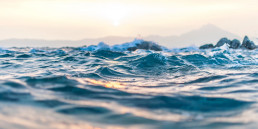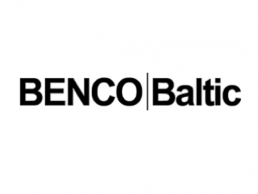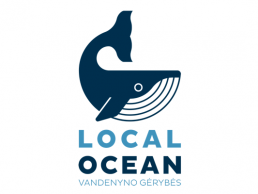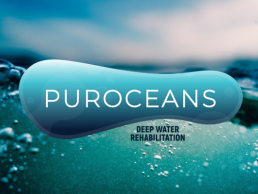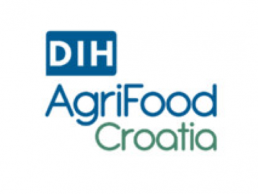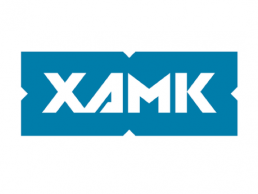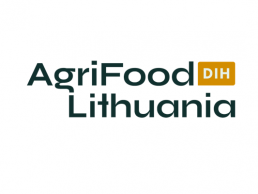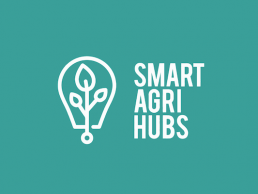Strengthening cross-regional DIH collaboration in aquaculture innovation support services
About AquaHubs
AquaHubs is a cross-border project to strengthen collaboration between Digital Innovation Hubs that are engaged in supporting aquaculture and fishery-focused digital innovation development, demonstration and implementation. Despite being an essential part of the agri-food industry, the aquaculture and fishery sector – which has been developed and digitized significantly during the past few years – and despite the interdependence amongst them, have remained stragglers in the process of adopting the latest developments of high-tech innovations.
The low level of digitization of the sectors prevents them from exploiting crucial elements – such as access to pre-existing technological know-how, targeted end-user outreach, validation, and commercialization – that can lead to their further development, growth and broader impact.
Therefore AquaHubs aims to support digital innovation development in aquaculture by providing go-to-market services on the local and international levels.
What Does Aquahubs Offer?
Test before invest
Solution prototyping, end-user testing and market need assessment
Skills and training
Training, internships, talent support
Commercialization
Business development, support to find investment and commercial exploitation strategy
Innovation ecosystem and networking
Stakeholder ecosystem building and synergy creation, providing opportunities for actors to meet
Role of AgriFood Lithuania DIH
Finding sustainable solutions to overcome some of the challenges associated with the aquaculture and inland fisheries sectors – which include insufficient digital tools to inform decision-making – has become the reason behind the initiative of AgriFoodLithuania DIH. As a result of the development of new technologies, it has become more crucial than ever to improve the aquaculture and inland fisheries sectors.
This IE was designed to support SMEs engaged in R&D&I in the aquaculture and inland fisheries sectors based on novel digital-based solutions. By providing specialized and purposeful services, the DIH has boosted the product/service innovation capabilities of SMEs and their business development capabilities.
As a result, the support granted has supplemented and even improved upon an ongoing national initiative aimed at developing DIH service capabilities. With the help of our support, companies and projects such as Local Ocean, PurOceans, XAMK, and Benco Baltic have been able to develop successfully.
Use cases
Local Ocean is an AgTech company based in Lithuania since 2017. We are developing a unique shrimp farming solution (hardware + software package), merging and adapting low-cost shrimp production methods from outdoor pond farming and indoor RAS (Recirculating Aquaculture System) fish aquaculture technology best practices, to create a fully sustainable, low cost, high yield shrimp production solution on a small footprint.
Our hardware has a unique architecture specially developed for shrimp growth cycle and low labour input and low energy consumption. It is managed by our bespoke software that controls and constantly optimises the shrimp growth process and water parameters using AI, Standard Operating Procedures and business processes.
Our system is an indoor aquaculture architectural innovation that will positively impact the creation and scale up of the European shrimp aquaculture industry by allowing a strong growth in production capacity at low infrastructure investment costs.
Our solution simplifies shrimp farming by the combination of our software that reduces the need for scientific knowledge and our standard hardware system giving predictable results. This easy to use, low cost and scalable solution increases commercial viability and therefore widens opportunities of commercial development.
Local Ocean system gives the possibility to local Europeans to grow shrimps at scale anywhere and cost efficiently to kick start the industry for better food security as well as giving the possibility to consume shrimps at fresh state compared to frozen. Our system can be installed in all types of indoor spaces in rural and urban areas.
All our waste is recyclable into added value by-products like chitosan, biogas or soil fertilizer.
Local Ocean Shrimp farming system is composed of 2 deliverables:
- Hardware: a multi tank single unit. The system is plug and play and can be installed in any location with minimal centralised infrastructure. The model is just add water and shrimps! The system embeds water pumps, water sensors, filtration system, heating and aeration. This system can work on its own or in a bank of systems.
- Software: connected to our database and live system data, it allows for all members of the shrimp farm to access personalised data to perform their tasks: system operator, scientific staff, manager level. The Software is not just a dashboard but a predictive and IA powered tool constantly adjusting the production process to ensure maximum yield.
The Hardware is to be sold or leased to client; the software is to licensed.
Contact point:
Christophe Legrand – CEO – clegrand@localocean.eu – +33 771 82 46 88
PurOceans Technology – for harmless removal of oil products and micro-plastic from the polluted floors of any waterbody around the Globe
The Company
PurOceans Technology is a Latvian startup within the CleanTech industry, established in 2019. Founded by a team of 5 members, with 35 years of combined experience in oil-contaminated sediments, microbiology, ichthyology, and civil engineering. 15 years of combined entrepreneurial experience, and 15 years ofcombined experience ininternational sales, project management, and product development.
Our mission is to clean up waters and seabeds from oil products and micro- plastic around the World. PurOceans team aims to rehabilitate deep waters and restore/recover Dead zones (over 500 areas around the World), as well as restore historically polluted areas from oil products and micro-plastic.
Technology
The pioneering, eco-friendly technology that performs sophisticated water bottom cleaning in the most cost / time-efficient way, providing a positive impact on the environment. PurOceans can clean up floors of the water bodies from oil, oil products, microplastic, and chemical sediments without:
- Mechanical intervention / excavation of soil
- Electrochemical treatment
- Chemical substances
How it works
Unlike the competitors, our technology doesn’t use the mechanical excavation of soil, electrochemical treatments, and other unsafe solutions. All it uses is the micro flotation effect, which is caused by the air being pumped down to the bottom of the water body, where the pollutants are located.
The pumping is performed through the submersible assembly, which is required to be lowered until the “umbrella”-like ending covers the treated area. Once the “umbrella” is positioned – the operator begins to infuse the air down to the bottom, where the bubbles of air start to swirl, make vortexes, and break down the molecular bonds of the hydrocarbons under high pressure. That is required to make the sizes and the weight of the particles as small as possible, to let the buoyancy force do its job.
While the “umbrella” concentrates the air at the bottom of the waterbody, the molecules of oil, microplastic, and other pollutants stick to the molecules of air, and due to the aforementioned physical effect of the buoyancy force (*air is less dense than water, hence, is forced up), bubbles of air start to float up to the surface, and drag all the hydrocarbons together.
The securing arm (Fig.1.), that connects the top part of the submersible assembly with the “umbrella” – isolates the lifted sediments from spreading around by the sub-flows of the moving waters, and makes sure that none of the pollutants escape the treated territory. Once the hydrocarbons reach the surface – they are safely collected either by skimmers, or by sorbents, and stored until it is handed over for the utilization.
During the operation, the PurOceans floating machine must be constantly surrounded by one or two types of floating booms (Fig.2.) to prevent the spread of the lifted hydrocarbons in an uncontrollable manner. The floating booms are keeping the pollutants within the controlled territory, and once the bottom sediments are cleaned up – the surface area is being cleaned too.
Our advantages
The key advantages of our technology can be explained as follows:
- Extensive use – possibility to eliminate the pollution from waterbody’s floor on the depth of 25 meters (with the possibility to extend up to 200 meters depth)
- Cleaning efficiency – proven results: 98% of water/floor purification
- Eco-friendly solution – no chemical/mechanical intervention
- No adverse effect – no damage to flora & fauna in any way
However, the main advantage – is the easy way of utilization. It is like that because we lift pollutants only. The pollutants mostly are oil, oil products, or microplastic. Any of it can be handed over to the refinery, and refined into something usable.
It is considered one of the most sensible advantages, simply because once the port operators decide to perform dredging – the utilization costs will be dramatically lower due to an absence of hydrocarbons in the sand.
Nature
Amongst the economic benefits, PurOceans Technology also improves the environment, flora, and fauna.
It’s well known that once the layer of oil reaches the bottom – it completely locks and isolates the means of feeding for the fish. Hence, the inhabitants of the waterbody begin to starve or mutate due to poisonous substances, the algae can’t produce oxygen, and eventually, the territory becomes a dead zone.
The specifics of PurOceans technology lays within its very main operation – by infusing air – it doesn’t only remove the pollutants, it also boosts the development of the underwater life, it stops the hypoxia of the waterbody, it mixes the layers of water, and eventually, it stabilizes the flora and fauna in the region.
General information
Contact: Rolands Grigorjans
Phone: +371 29106267
Email: roland@puroceans.com
Url: www.puroceans.com
Goal of the IE
The purpose of the IE was to increase understanding of how the estimation of existing fish stock (type and quantity of fish) can be automated and made more accurate. To this end, we sought to complement sonar data with underwater video, in order to automatically identify the type of fish, and eventually estimate the size of fish stock in the body of water.
Description of the IE
Strong fish stocks, good water conditions, and quality of fish products are all prerequisites for a viable fish economy and for increased use of local fish. Sustainable fishing is also good for the body of water, because it helps to remove nutrients, and hence reduces eutrophication. The increased use of local fish is also hoped to improve the business opportunities for fish primary production. Competitive and predictable operative environment would enable sustainable growth of fish primary production and would attract new firms and capital to the field.
Being able to maintain strong fish stocks and to predict the amount and type of fish to catch requires new technological solutions. Up to date, estimation for fish stocks have been created with two primary ways:
- Exploratory fishery is currently considered the most reliable method for estimation. However, the reliability of this method has been questioned, with the main argument that different fish species may behave in different ways and the results are not then generalizable in a reliable way.
- Professional fishery. In this method, estimations of existing fish stocks are created on professional fishermen’s reports of caught fish. The main challenges of this method are that the estimations are created on past data and that many of the lakes do not have professional fishermen.
These methods have room for improvement in terms of cost-efficiency, accuracy and use of digital technologies. Using new technologies, however, is not a straightforward task. This is why we decided to focus on exploring technological opportunities for automating the estimation of fish stocks.
Objectives of the IE
- To explore technological opportunities to gather data of fish stocks (particularly sonar, underwater drones, and underwater cameras)
- To explore real-life challenges of gathering data
- To determine workable methods for data gathering
- To evaluate the quality and usability of gathered data for automatic recognition of type of fish.
- To develop Proof-of-Concept for automated estimation of fish stock.
Challenges addressed by the IE
Some of the known challenges related to fish stock estimation are:
- Sonar does mainly give data about quantity of fish, not type of fish
- Fishing business is currently too unpredictable. Consumers are unsure what fish and what quantities will be available.
- Fishermen do not know what type of fish and how much can be caught in a sustainable way, and without harming the viability of fish stock.
- There are not enough data currently to maintain viable fish stocks in a sustainable way, and vice versa not enough real-time data for fish stock management, e.g to estimate the need of removing low value fish species
- Granting permits for professional fishing could be made easier if there would be reliable data showing the viability of fish stock in the body of water.
- There are not enough reliable ways of estimating existing fish stocks in the body of water.
Stakeholder group
Researchers, fishing economy development organizations, officials responsible of water body maintenance, commercial fishermen, fisheries administration, officials planning for responsible fishery management and fishing, policy makers, certifiers of sustainable fishing
Goal of the IE
The goal of the project is to develop the technology which will enable users to analyze the protein, glycogen, fat and moisture levels in oysters with the accuracy/prediction rate higher than 0.95 rate (r2) and with the prediction errors which do not exceed 0.4% values.
Description of the IE
For many working in oyster farming or further down its supply chain, delivering the most fresh, highest quality and food-safety compliant oysters to their respective customers is key to lasting business success. Solutions that can be implemented on-site – in the operational environment – are especially needed, as they could help farmers assess oyster quality, growth conditions, evaluating potential risks and operational planning both at oyster growing and harvesting stages, as well as performing oyster quality and freshness monitoring and preventative screening down different supply chain stages. The approach chosen to address this market lack is the development and innovation of an oyster quality assessment service that utilizes NIR spectrometry in combination with machine learning and advanced data analysis techniques. The end result will be a service for rapid on-site assessment of oysters, where a customer opens a single oyster from a batch, ‘scans’ its flesh and receives results on its (and by extension the remaining batch) quality parameters.
Objectives of the IE
- To develop and adapt near-infrared spectrometry (NIR), machine learning technology and data analysis techniques to oyster farm needs and requirements.
- To demonstrate the above-mentioned approach in an operational environment.
- To validate and assess the impact of our IE to the oyster farm sector.
Challenges addressed by the IE
Currently oysters are being analyzed for their levels of biotoxins, heavy metals, diseases and bacteria, quality of oyster flesh, water content, concentration of proteins, fats and glycogen. Measurements of these parameters are mostly done using a range of different conventional, laboratory-based methods that are limited in their industrial applications by being time-consuming, low-throughput and costly. Therefore, many attempts have been made in the development of various fast, high-throughput and low-cost methods for analysis of some of the aforementioned oyster parameters on-site. Scientific effort has been previously made, mainly, in the field of visible and near infrared reflectance spectroscopy applications. Scientific studies demonstrate that the moisture, protein and glycogen in oysters can be predicted in higher than 0.92 rate (r2). This indicates that the models built on NIR reflectance spectroscopy are sufficiently accurate and reliable for quantitative applications.
Stakeholder group
Oyster farmers, Resellers, Wholesalers, Logistic companies, Consumers

